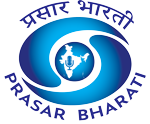In a linguistically diverse country like India, disputes over language are commonplace. Yet, intriguingly, resistance to English education and the resulting sense of “Englishness” is almost nonexistent—perhaps never existent. What lies at the root of this? A new book by scientist Amitabh Satyam, titled *The Hindi Medium Types*, delves into this question, unraveling the hollow “Englishness” entrenched in Indian society, particularly among the elite.
Originally from Sheohar, Bihar, Amitabh Satyam, an IIT Kanpur graduate with an MBA from Fisher University, USA, shares his journey from Bihar to America. Through experiences spanning student life to professional endeavors, he illustrates how English in India is not just a language but a mindset. Despite India’s independence, colonial notions and Western cultural concepts remain firmly rooted in the Indian psyche.
Satyam highlights experiences that many Indians, especially those who speak local languages, may find relatable. Though published in English and Hindi, the book champions every Indian local language, culture, and its values. From viewing traditional attire like dhoti-kurta as inferior to dismissing Ayurveda as unscientific, Satyam underscores aspects that reveal the hollowness of “Englishness” in certain societal sections. He notes how English medicine has deemed expensive fruits like apples essential, while local and seasonal fruits are equally beneficial.
Striking at the mindset of English supremacy, Satyam writes: “Today, people don’t even consider that English is the language of foreigners who forcibly ruled and exploited us. Millions of Indians—once pioneers in science, engineering, literature, medicine, philosophy, and art—were declared illiterate overnight. By the decree of English-speakers, India’s greatness was dismissed, and English language and culture were imposed as superior. Jobs went only to those who spoke English and followed their ways. Governance was in their hands.”
Satyam observes that English culture so deeply influences Indian systems that parents prefer schools named after Western “saints.” He recounts how merely changing a school’s name in his hometown led to a surge in admissions. Remarkably, the notion that English is supreme follows Indians even to America. Satyam shares: “In the USA, my English accent and pronunciation were American-like. Most Indians speak English with an Indian accent, having learned it in India. But I learned proper English in America, so it sounded like theirs. My American accent earned me praise from Indians there: ‘You’re from India? You sound like you were born here!’”
The book, divided into nine chapters, is a treasure trove of anecdotes exposing the colonial mindset ingrained in Indian society. It challenges the notion of venerating the language and culture of former oppressors, suggesting that a large part of India’s population is gripped by a form of “Stockholm Syndrome.” This book is essential reading for anyone who senses the excesses of Western civilization and colonial thinking in India.














